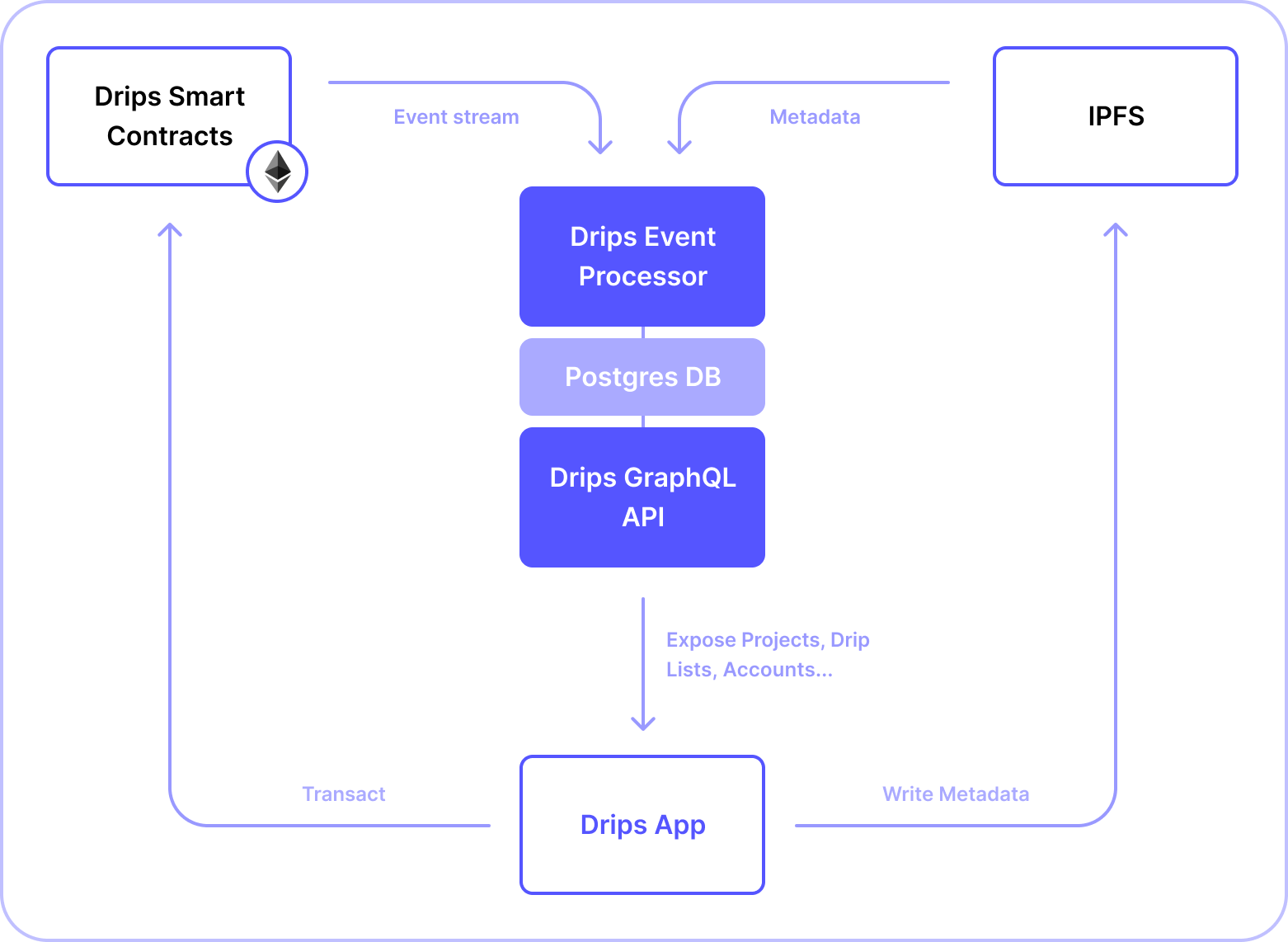Drips GraphQL API acts as the query layer for the database created by Drips Event Processor.
Drips Event Processor is a custom, read-only backend service for Drips. It ingests low-level Drips protocol Ethereum events and related IPFS documents in real-time, and produces a database of higher-level entities for the Drips App (such as "Drip Lists" and "Projects"). This database is then read by this API service in order to provide a single, convenient and fast endpoint for querying decentralized data within the Drips Network without complicated client-side logic.
As "read-only" services, Drips Event Processor and Drips GraphQL API together merely act as a query API layer for on-chain activity, meaning that Ethereum and IPFS remain the source of truth for all activity on Drips. In practice, this means that anyone is able to run an instance of this service and reach the exact same state as Drips' production instance once all past events have been ingested.
Drips Event Processor & GraphQL API together are comparable in functionality and scope to the Drips Subgraph, but add the flexibility of computing and exposing higher-level abstracted entities (such as Projects and Drip Lists). The canonical state of these entities is derived from low-level generics within the Drips Protocol, in combination with metadata stored on IPFS.
First, populate .env according to .env.template.
To launch the application, run:
npm installNow, run
npm run start:devto start the server.
The repo comes with a docker-compose.yml configuration that runs the entire Drips stack locally in Docker, builds the frontend app, and executes its E2E test suite. This allows you to make local changes to the API, and test them against the app's current production version to ensure nothing is broken.
To get started, simply run npm run build (to build your version of the API locally), and then npm run test:e2e. On first run, this will take a while to pull and build all images. Subsequent runs will be a lot faster.
After you run the command, you'll see the app build, and afterwards execute tests. Once it's done, the command will exit with either 0 or 1, and display test results.
If you make local changes or a new version of external services (such as the app) was published, the command will automatically rebuild the affected images.
